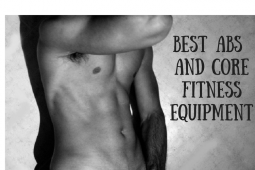Fitness Guides: Planking

A Complete Core Strength and Abs Workout
While it looks easy, planking is an intense workout for your abs and back muscles.
It is worth getting over the hump of your first few planking sessions. The results, and workout, are superior to similar exercises such as sit ups. Aside from being an excellent core strength exercise, it helps you train your glutes, hamstrings and shoulder muscles. Planking will improve your balance and posture if you make it part of your regular routine. I like to end my workouts with a series of planks. The best think about them is that you can fit them in anywhere – for example between cardio machines in the gym.
This guide introduces planking, it’s benefits, and how to get started.
Beginners: How to Plank?
Getting into the plank position is easy, but you’ll find staying there more difficult.
All you need to do is raise your body off the ground using your arms and toes. You need to keep your whole body straight and you should keep your arms close together in an ‘L’ shape to the ground.
To start with, you should aim to hold each plank for around 30 seconds, repeating five times. Breaks of one minute between planks are ideal. Unlike other exercises, with planking, quality is far more important than quantity and you should be aiming for perfect form to maximise your fitness gain.
From 30 Seconds to 2 Minutes
To take things up a notch, gradually increase from 30-second holds to 1 minute and from there to 2 minutes. At this point, you can consider yourself to be a good level of fitness. For the record, the world record for the longest plank is held by Mao Weidong from China with a staggering time of 4 hours and 26 minutes.
Once you’ve gotten good at the standard plank, there are some variations you can try. Side planking is great for training your obliques while a reverse plank works your glutes, hamstrings and lower back. You can also experiment with raising your legs above horizontal to shift your centre of gravity and make things harder.

Benefits of Planking: A Long List of Muscle Groups
If you do planking regularly, you’ll see the following improvements:
A toned belly:
When you first start planking, your belly is where you’ll first feel the strain. This is your abdominal muscles growing and tightening. And it’s the first step towards getting a six-pack. But, remember, for full visual effect you also need to lose any fat you have around the stomach, so try to mix in some cardio exercise and keep an eye on your diet.
Reduced back pain:
If you suffer from back pain then you’ll find that planking can offer some relief. Strengthening your core muscles will reduce lower back pain, and because planking also builds your upper back muscles with minimal impact, giving you pain relief there as well. If you have back problems, remember to speak to a medical professional before you do any type of exercise (planks included).
More flexibility:
Almost every part of your body, from your neck and shoulders to the arches of your feet and even your toes get stretched when you plank. As a result, with regular exercise, they will begin to expand giving you more flexibility and range of motion.
Better balance and posture:
Good requires strong posterior muscles and planking is a great way to get them. Balance-wise, doing side planks and extensions helps you practice using your abs to keep your body stable which makes for a great workout.
For many more options for core and abs workouts – check out this Core and Abs Fitness Equipment Reviews page now!
More popular general fitness guides:


